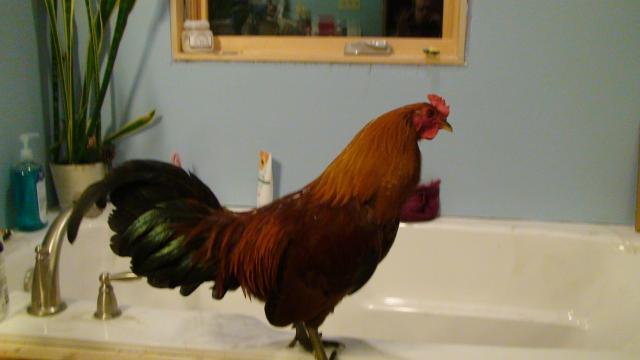- Thread starter
- #21
Vcomb,
I may be getting to truth about color pattern I am playing with. I got a little bit of a history lesson from brother about some of the variation I remember of our line. First, birds I remember as redquill were either a battlecross made by crossing our hens with Doc Kniefords to increase size or F2 hybrids of same that also included black birds. The Doc Kniefords existed on our farm only as cocks / stags since not of our breeding and where used only to make the cross. They were nearly black like black Warhorse and pretty big for American games. This would explain my recollection of how our redquill colored birds were not man-fighters as many think being typical of Eslin Redquills. They simply were not Eslin Redquils, only redquill in coloration and most were heterozygous.
Shortly I will upload some picture of hens and chicks that are dead ringers for some of our old color patterns. Should be pretty interesting as the pattern of inheritance indicates incomplete dominance and a color pattern not seen in our chicks for some time has popped up. I think you will find this to be pretty cool!
I may be getting to truth about color pattern I am playing with. I got a little bit of a history lesson from brother about some of the variation I remember of our line. First, birds I remember as redquill were either a battlecross made by crossing our hens with Doc Kniefords to increase size or F2 hybrids of same that also included black birds. The Doc Kniefords existed on our farm only as cocks / stags since not of our breeding and where used only to make the cross. They were nearly black like black Warhorse and pretty big for American games. This would explain my recollection of how our redquill colored birds were not man-fighters as many think being typical of Eslin Redquills. They simply were not Eslin Redquils, only redquill in coloration and most were heterozygous.
Shortly I will upload some picture of hens and chicks that are dead ringers for some of our old color patterns. Should be pretty interesting as the pattern of inheritance indicates incomplete dominance and a color pattern not seen in our chicks for some time has popped up. I think you will find this to be pretty cool!









 .I am an AGF lover but can't have those ghetto blaster boys where I live, think my neighbors would string me up!
.I am an AGF lover but can't have those ghetto blaster boys where I live, think my neighbors would string me up!  ....I do have a few "special needs" hens.
....I do have a few "special needs" hens.




